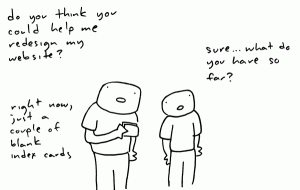Is it smooth and seamless, or is it downright criminal?
Remember the TV crime shows of the 70’s? I used to watch all of them – Columbo, Starsky & Hutch, ChiPs and my favorite, Charlie’s Angels. In those shows, (if I remember correctly) police relied more on instinct and intelligence to catch the bad guys, versus the ‘crime scene investigators’ of today’s TV crime dramas.
I still watch TV crime shows today (you almost can’t escape them), but there’s one term that seems to be missing from today’s dramas. It’s also missing from most companies’ websites:
“M.O.”
In those crime dramas, the M.O. referred to a criminal’s “modus operandi,” or mode of operating. It can refer to your website too, but with a dual meaning. The first is still the mode of operating – as in, how the website is configured, its layout, etc. But the second meaning is far more important because it can greatly impact your company’s ability to reach consumers who are on the go and convert them into customers. When done well, it can increase foot traffic in your store or online purchases and prevent a consumer from switching quickly to your competitor. The second meaning I’m referring to is “mobile optimization.”
Companies like Gap, Inc. have figured it out. They have made sure that their site is as easy to use on a smart phone – and make a purchase from – as it is on their online website. They have made sure that their site doesn’t take forever to load on smart phones and other mobile devices, and made it simple and easy to navigate. In short, their site is optimized for mobile use.
Considering more and more people are using smart phones to access the web, this is the mode by which all companies should operate. As a new site is being developed or an old one redesigned, mobile optimization should be a top consideration. How do you get started?
First, you can check out this blog (scroll down to the 3rd article and below). This blog contains a few tips – some a bit more technical than you might like – for getting your site ready for mobile use. (This blog also contains information about mobile SEO but this is different from mobile optimization; I encourage you to understand the distinction). Here’s another site that contains some great dos and don’ts.
So, if you are in the process of updating your website or creating a new one, keep these things in mind:
- People on the go who are searching for information about your company are likely ready to buy at the time they are searching. Make it easy for them!
- Avoid flash or graphics that take a long time to load, or you risk people abandoning your search and moving on to your competitor.
- If you are already, or are planning to, have a mobile marketing campaign, make sure it is integrated with and points people to your mobile site
Jennifer






